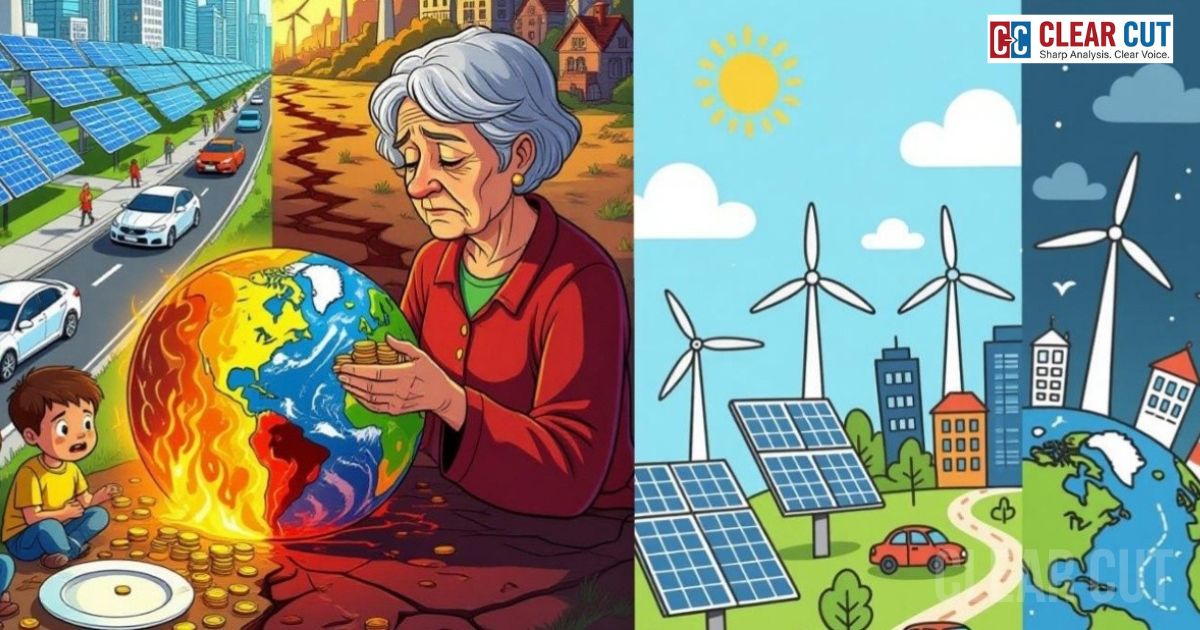Photo Credit: Antara Mrinal
Clear Cut Education Desk
New Delhi, UPDATED: Sep 25, 2025 03:50 IST
Written By: Antara Mrinal
In the center of India, two educational angles exist. One is “Bharat,” a big, colorful area of agrarian landscapes that tells stories of schools under mango trees, where students trek miles for only one lesson. The other is the “Urban India” cityscape filled with nested tuition centers, digital classrooms, and learning by smartphones. This is not just poetic; data are available, and the data tells a story about inequality, resilience, and hope.
A Story of Two Worlds
The difference in the levels of literacy is perhaps one of the most visible indications of India’s rural – urban divide. In 2011, levels of rural literacy reached only 68.9%, while urban levels were at 84.98%. To add to the challenge, rural women lagging even further with only 58.75% literate, while urban women stood at 79.92% (amulyacharan.com). Literacy rates have seen steady improvement, indicating that rural rates climbed from 67.77% in 2011 to 77.5% by 2023–24. What is notable is rural female literacy improved from 57.93% to 70.4% (India Today). Even with the improvements, the gap is evident. National Statistics Office (NSO) 2018 data indicated that rural male literacy stood at 81.5% and female literacy was approximately 65%, compared to 92.2% and 82.8% for urban areas respectively. The improvement is strong, particularly for rural girls, but structural barriers still exist.
Infrastructure: Dream vs. Reality
The concrete reality of the schools in India shines a light on this duality. As of 2021 – 22, only 47% of rural schools had drinking water, and 53% had separate toilets for girls – basics that many urban schools take for granted (Drishti IAS). Annual Status of Education Report (ASER) 2024, however, reported modest improvements, with the percentage of schools with usable toilets rising from 74.2% in 2018 to 79%, and the share of schools without libraries falling from 25.8% to 17.5%. But, the digital divide is a huge absence: while 23% of urban households owned computers, only 4% of rural households did; while 42% of urban households had internet access, only 14.9% of rural households did. Rural schools are slowly changing, but many villages still function as digital deserts (ThePrint).
Access Without Learning
Accessing schooling does not mean that there will be learning. The ASER 2022 data offered a sobering moment from rural India: only 43.8% of Grade V students could read a Grade II text, 44.1% could do division, and only 25.9% could do subtraction. Some data shows improvement from ASER 2024: reading ability for Class III students increased from 16.3% in 2022 to 23.4%, and learning subtraction improved from 20.2% to 27.6%. These incremental gains highlight resilience but also show that access must be matched with quality to ensure true educational empowerment.
The Digital Divide
The distance separating Bharat from Urban India has deepened because of technology. Recent surveys indicate that one of every three Indian students now relies on private coaching, heavily skewed to urban areas where coaching resources are plentiful (The Times of India, The Economic Times). Urban families spend nearly nine times more than their rural counterparts on education in private schools, tuition, books, uniforms, and coaching (The Times of India). For rural learners, there is often little room for affordable or even available options, deepening the divide. While urban students ride the “coaching wave,” rural students are subjected to the limits of resource availability.
Government’s Response
Unified District Information System for Education (UDISE) 2024-25 data indicates retention is improving across the country; nevertheless, rural areas continue to suffer from teacher shortages, lack of digital infrastructure, and difficulties transitioning to the higher grade levels. Programs such as Samagra Shiksha, Understanding of Lifelong Learning for All in Society (ULLAS), and New India Literacy Programme (NILP) have supported growth in rural literacy and upskilling for adult learners (India Today, Drishti IAS). These actions have provided many rural children and adult learners in villages a second chance at learning. Glimmers of hope exist, still. In Uttarakhand’s hill villages, however, 1,149 schools are running without primary teachers and nearly 59% of the schools do not have principals, leading students to migrate to urban areas (The Times of India). Simultaneously, states, such as Meghalaya, are demonstrating courage by committing ₹2,500 crore (almost a twelfth of its ₹30,000 crore spending) to education infrastructure (The Times of India). Conversely, Goa shows a significant shift toward the privatization of education and increased parental interest on the part of urban families toward private unaided schools rather than government provision.
Crossing the Gap
Bharat and Urban India all aspire to education, but exist in two disparate worlds. Rural India has seen impressive improvement and motivation emerge, but it continues to endure the burden of poor infrastructure, inequalities in digital access, and inadequate quality outcomes. Urban India, having better access to improved infrastructure, has fallen into the perils of commercialization and excessive trust and dependence on coaching that often belies a critical and holistic view of education. Gaining traction will require relatively targeted investment in rural infrastructure and digital connectivity, solid teacher appointment and training, competency-based learning approaches, and enhanced community engagement. Education is about more than just learning – it is the process of emancipation, which must be the connective tissue bridging the two.




